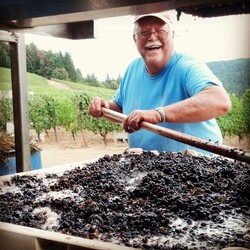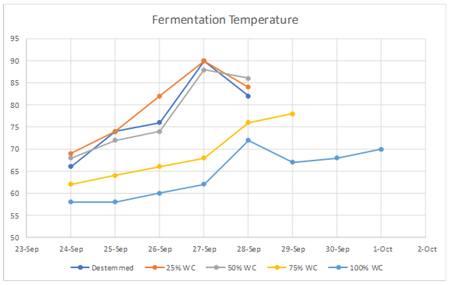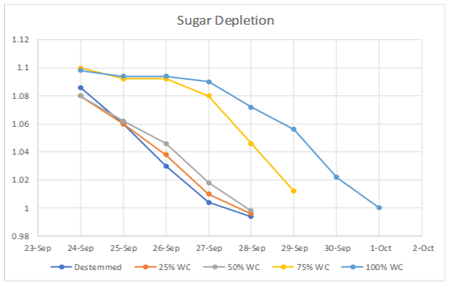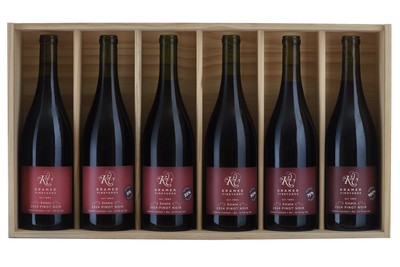2014 Whole Cluster Fermentation in Pinot Noir
What is Whole Cluster Fermentation?
What is Whole Cluster Fermentation? This refers to fermenting entire bunches of grapes, stems and all. Our grapes typically go through a de-stemmer, a machine that knocks the berries off the stems. In the process, many of the berries split and release juice immediately. When we bypass that step, the fruit stays intact longer, removing the sugar available to the yeast more slowly. This results in fermentations that take longer to complete at much lower temperatures. The shift in fermentation kinetics, along with the presence of the stem, impacts the aroma, flavor, and structure of the wine. Are these features beneficial to the overall quality? How much of the whole cluster is the ideal amount, if any? Will our ideas about this change as the wine ages? With the vintage? These are all questions we hope to answer through our whole cluster series.
The Experiment
In 2014, we harvested five tons of Pinot Noir from the same part of the vineyard and separated the fruit into five fermenters. We added a whole cluster layer in four of these vats, 25%, 50%, 75%, and 100%. The fifth bin was all destemmed. We proceeded with our typical fermentation management protocols, with pump-overs and punch-downs twice daily and pressed at dryness. The wines were aged in older French oak barrels and bottled in the winter of 2016.

Owner Keith Kramer, filling vats with destemmed Pinot Noir

The Results
We observed differences in the fermentation kinetics almost immediately. The vats with higher percentages of the whole cluster fermented at lower temperatures:
This also correlates with the fermentation rate, as indicated by the speed of sugar depletion.
Utilizing whole cluster fermentation as a technique seems to result in slower fermentation with lower temperatures. Cool, right?

Technical Details
We found that the chemistry of the finished wines was varied, although this could be due to differences in ripeness levels in the field and clonal differences throughout the block. It is important to note that each vintage is unique, so to learn anything meaningful from this exercise, we will need to repeat the experiment over multiple vintages in varying conditions.
The Wines
Our 2014 whole cluster Pinot Noir set includes one bottle of each experimental wine and the 2014 Pinot Noir Yamhill-Carlton, for six bottles. This collection is a lovely gift and fun to share at a dinner party or with friends.
Update: The 2014s are sold out, but the experiment was replicated in 2015. You can find those wines here >>

